Be prepared and make your hunt more comfortable by having essential hunting gear with you. While different hunts require different gear, there are a few pieces of hunting gear that you should never head out without. Use this guide to build the best hunting pack for your next hunt. We’ll also cover gear to have with you whether you’re elk hunting, deer hunting, or duck hunting. The only things we won’t cover here are weapons and ammo. There is no shortage of resources for those out there.
Essential Clothing for Hunters
Weather poses a common but serious risk to hunters. Hypothermia happens when your body loses heat faster than it produces it, causing your core body temperature to fall, and it can happen at temperatures as high as 50° Fahrenheit.
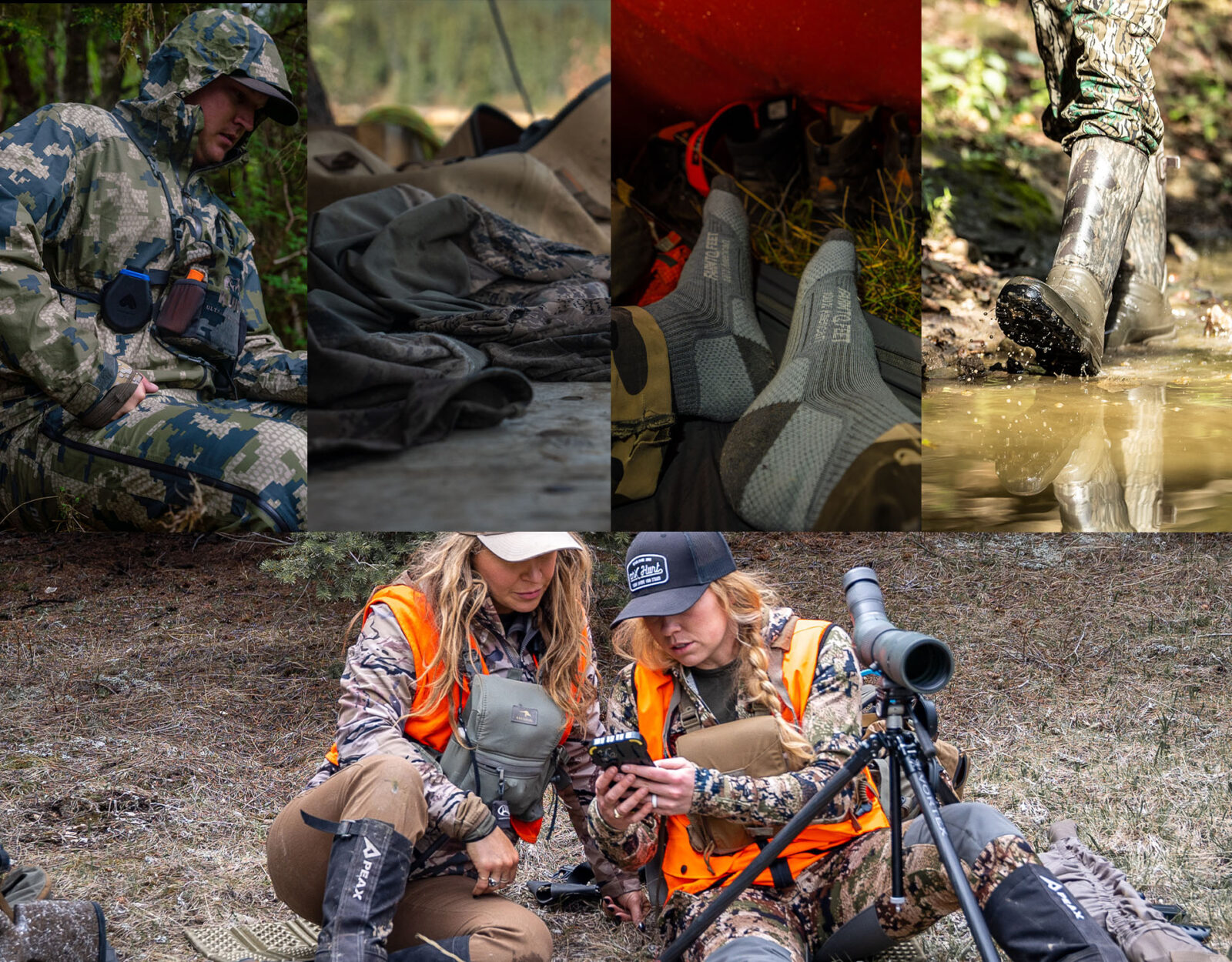
Hunting Rain Gear
One of the best ways to protect yourself against hypothermia is to have good rain gear. Quality rain gear will not only keep you dry, but also the clothing underneath dry. This is a massive benefit for staying warm, especially on backcountry hunts where the clothes you’ve got are the clothes you’ve got.
A few features to look out for in rain gear to make your life easier: One is full side zips on your rain pants. This makes putting them on and taking them off much easier. Another thing is heat dumps on the jacket. Rain gear is great at keeping moisture out, which means it’s also great at keeping it in. Sweat comes to mind here. Having a way to release heat (often seen as zippers along the armpit) will help manage moisture on the inside of the jacket. Another feature to look for is packability. Rain gear is great when you need it, but otherwise, it’s just sitting there. Best not to take up most of the space in your pack.
Base Layers for Hunting
Having base layers is another excellent way to manage moisture while hunting. Base layers wick perspiration away from the body to keep your skin dry, and are the foundation of any layering system. There is a wide range of base layer fabrics, including synthetics like polyester and nylon, or natural fibers like merino wool or silk. Some hunting brands specialize in base layers that block scent and offer extra durability.
Merino excels at managing stench. It’s naturally antimicrobial and bacteria have a harder time attaching to the fine fibers of the wool. Merino wool also retains most of its insulating properties when soaking wet. On the flip side, it’s not that durable and doesn’t dry nearly as quickly as synthetics.
Synthetics excel at moving moisture and dry faster than merino. This translates to staying warm when it’s cold and cool when it’s hot. Durability is better on the synthetic front as well. The con to synthetics is the stench. They will stink after hard use.
Hunting Socks
If you keep your feet dry and in good shape you will be able to go further, stay out longer, and move around comfortably in all weather conditions. The number one rule with socks is to avoid cotton. Just like a vital base layer, having socks that wick moisture, provide protection and warmth, and prevent blisters will pay dividends during your hunt.
Hunting Boots
Hunting boots are not a one-size-fits-all piece of gear and can mean the difference between pressing on and calling it quits in the field. Pay attention to fit, feel, and durability when choosing a hunting boot. Also, consider your style of hunting and the environment/terrain. Stiffer boots will excel in steeper country. Then there are insulated and non-insulated boots as well. Insulated will shine on stagnant hunts, like sitting in a treestand or laying in a duck blind. And non-insulated will be best for more mobile hunts like spot and stalk and backpack hunting. Schnee’s has an extended selection of both and is a more than trusted name in the boot world.
Blaze Orange Options
Wearing orange when gun hunting should be a regular practice, and in some states, it’s required by law. An orange vest and hat are good things to have on hand. It’s your responsibility as the hunter to take the time beforehand and know the rules and regulations around wearing blaze orange for your hunt. And “wearing orange” is not just a general rule either. Colorado, for instance, requires you to wear 500 square inches of orange. Know what you’re walking into.
Nice-To-Have Hunting Clothes
Like anything, there are things we need and things that we want. There’s nothing wrong with having a few of those wants on a hunting trip. Here are some items to think about.
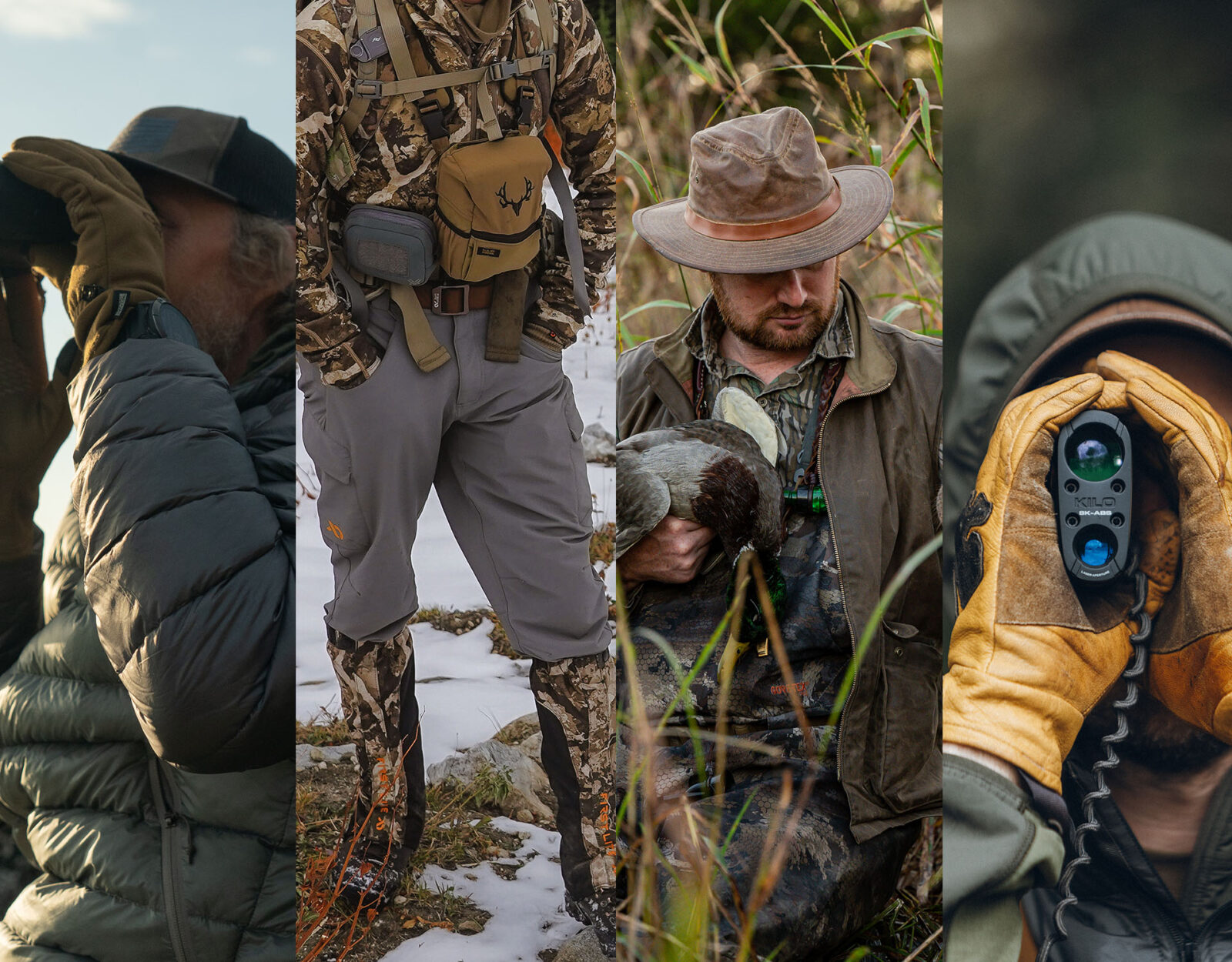
Packable Down Hunting Jacket
On a cold morning, there are few things as nice as the feeling of putting on a down hunting jacket. It’s essentially like a mobile sleeping bag and an item that every hunter should think about carrying in their backpack. Generally, they’re lightweight and pack down to almost nothing. Take note of whether the jacket has a durable water repellent (DWR) coating on the outside and what fill down they used on the inside. The higher the fill (900-fill vs. 600-fill), the warmer per ounce the down will be.
Hunting Pants
Not only are a subpar pair of hunting pants uncomfortable due to improper fit and scratchy material, but they can also put a damper on your hunt by lacking functionality and being loud. Look for pants with a more athletic fit and material that doesn’t sound like a plastic bag being crinkled as it moves against itself. Something else to consider is the presence of heat vents (typically in the form of zippers along the outer thigh) that allow you to disperse heat while hiking.
Try to stick with pants that have a DWR coating to bead any light rain so you can save the hassle of pulling out your rain gear unless when you really need it. And lastly, look for a good pocket layout. You don’t realize how useful they are for stashing things until you need them. A good pair of hunting pants needs to be versatile, end of story.
A Few Good Hats
Hats aren’t just for good looks while hunting. They are a legitimate tool that can keep you cool or warm, and also safe in the field. Keep in mind, no matter the weather, we dissipate heat through our heads and feet the most. Hats can help manage that. For scorching hot days in the early season having, at the very least, a classic ball cap will shade your face from the sun. To take it a step further, a boonie hat offers the ultimate in sun protection. When the temperatures dip down, there’s nothing like putting on a good beanie to insulate our body warmth.
As for safety, every hunter should own a few blaze orange options for headgear, especially during gun seasons. This allows other hunters to see you more easily and avoid potential hazards.
To “cap” things off, fit is important. Hats that are too loose are annoying to keep adjusting. On the opposite side, hats that are too tight are uncomfortable, and can even cause soreness. Find the right fit for you before heading out.
Waterproof Hunting Gloves
Whether it’s late-season big game hunts or waterfowl hunting, a pair of waterproof hunting gloves is something to consider for your kit. When it’s cold out, wet hands mean cold hands, which translates into a loss of mobility. It’s also just plain uncomfortable. Look into gloves that have exceptional fit to retain functionality. Touch screen compatibility is another great feature so you don’t have to take off your gloves to use your phone. Then there is packability. It’s nice to have something that can be stowed away small until you need it.
Essential Hunting Tools
Hunting Knife
Without fail, every hunter should carry a knife. Some prefer fixed blades. Some prefer folding knives, and others carry multi-tools. From cleaning game, cutting rope, or notching hunting tags, a hunting knife is one of the most essential pieces of hunting gear you can have with you.
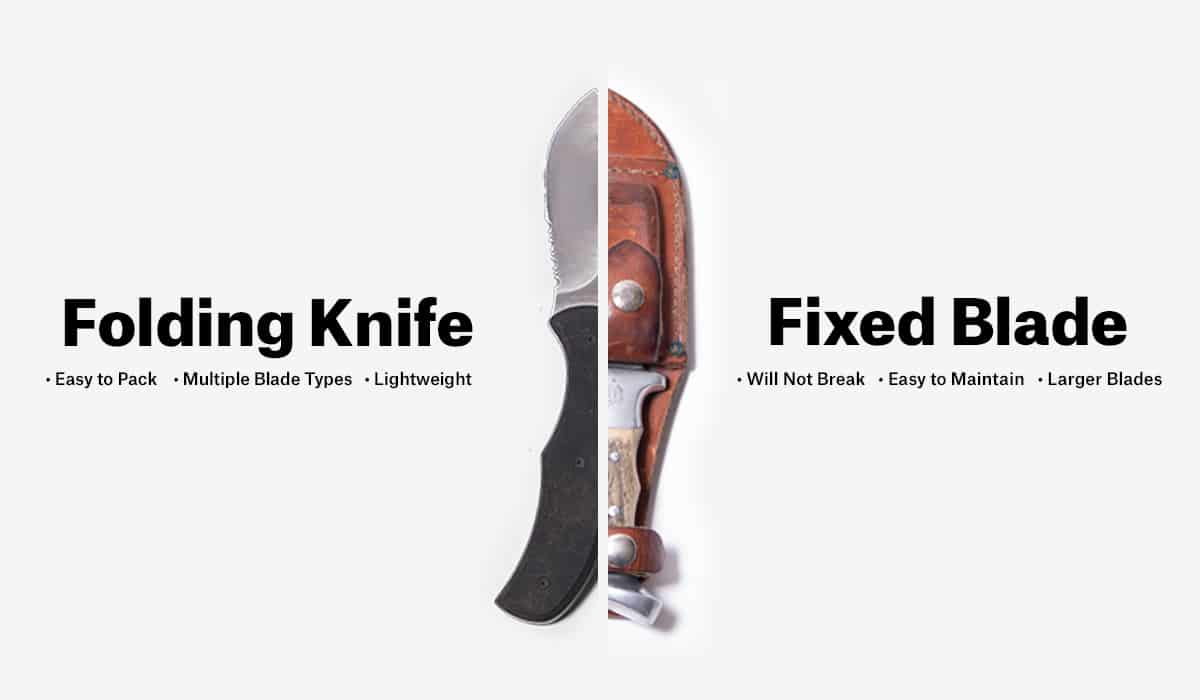
Here we’ve gathered some advantages of different styles of knives to help you narrow your choice:
Fixed Blade
- Will Not Break
- Easy to Maintain
- Larger Blades
Folding Knife
- Easy to Pack
- Multiple Blade Types
- Lightweight
Multi-Tool
- Most Versatile
- Screwdriver, Saw, Scissors – All-in-One Hunting Tool
A growing number of hunters are now opting to carry knives with replaceable blades because they are ultralight, very sharp and don’t need sharpening, and they are affordable.
Nitrile Gloves
When it comes to cleaning big game animals in the field, a quality pair of nitrile gloves makes clean-up easier and aids in the prevention of acquiring any diseases, like blood poisoning. If you’ve got any open wounds on your hands, you should be extra cautious here and use gloves just to be safe. The nitrile gloves with grips on them work great and tend to be more durable than others. You can also put these on underneath a regular pair of gloves to essentially make them “waterproof.”
Backpack
No matter the species being hunted, a backpack can be one of your greatest hunting partners. It’ll carry everything you need and do it comfortably while leaving your hands free. This helps keep you in the field longer, which will inevitably increase your chances of success. And when that moment of success arrives, your hunting backpack will help you haul out that hard-earned harvest.
A few things to keep in mind are bag size, ease of access into the bag, and water resistance. For the more game-hauling–specific packs with suspension systems, you’re going to want an adjustable torso length as well as load lifter straps. Being able to put meat in between your bag and frame is another bonus, keeping blood and meat away from gear in the main bag.
Headlamp
Starting early and ending late means hiking through the darkness. A quality headlamp is essential for navigating to and from hunting locations in the dark. It’s also a big plus for camp life as well as processing game in the dark. You’ll for sure want a headlamp with different light settings. The option for a red light will come in handy hiking into hunting areas as animals won’t detect that color as easily as white. Also, a locking feature is a must. You don’t want to accidentally turn your headlamp on in your pack only to be greeted with a dead battery when the sun goes down.
Other Useful, But Not Essential, Hunting Gear
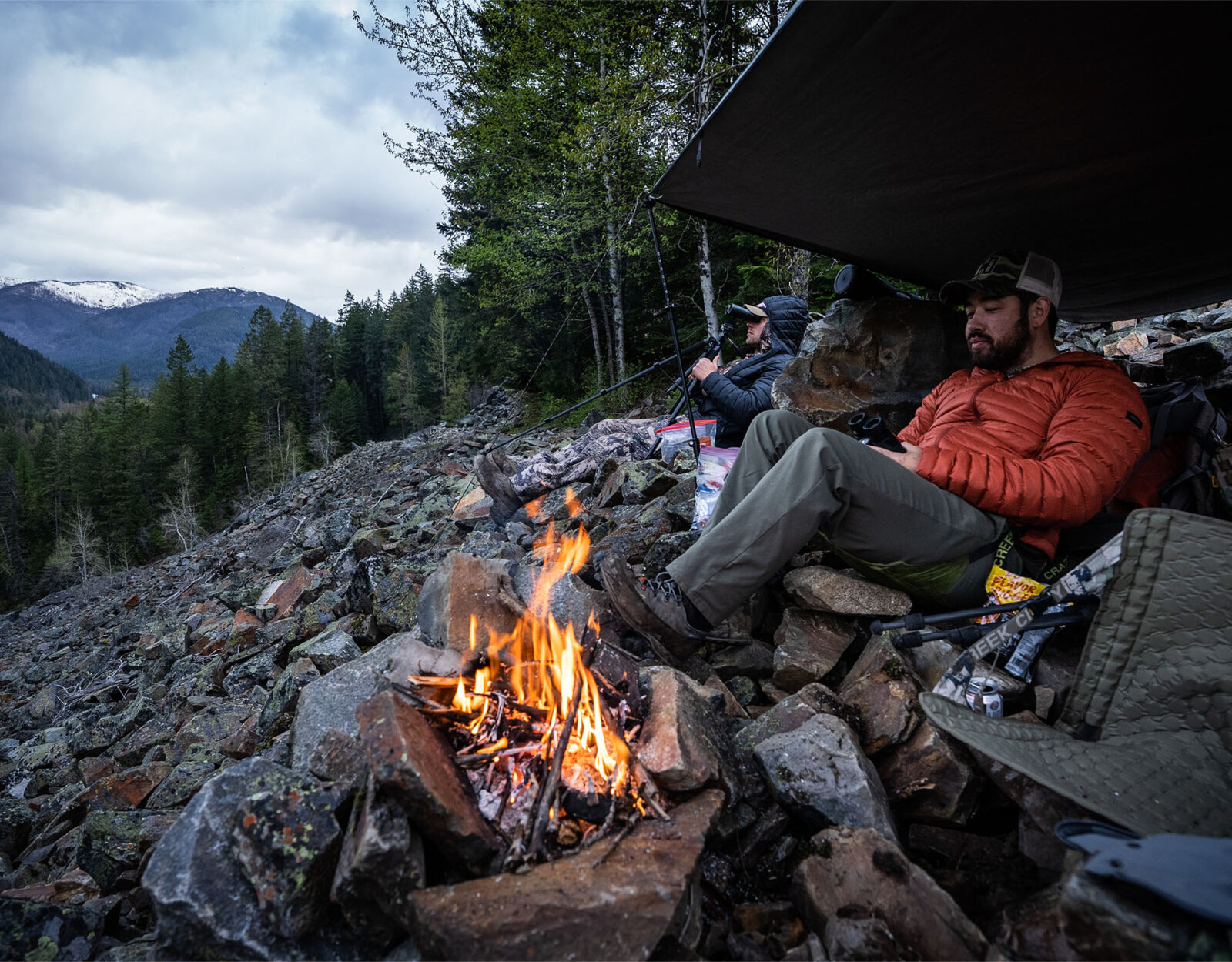
Over the years, seasoned hunters have learned a few tips and tricks for what they like to carry in their hunting packs. Some of these gear items serve more than one purpose in the field, which is why hunters count on them.
- Trash bags or construction tarps—A couple of large lawn bags, when cut open, make an excellent ground cloth to put game meat on as you process an animal. They are also excellent for keeping gear/clothing dry (especially during stream crossings), or in a worst-case scenario serving as part of a survival shelter.
- Pen, pad, Sharpie—Whether for jotting down notes and observations while watching for game or using the Sharpie to leave notes that won’t ruin in the rain, bringing these few small items along will be worth it. Pro tip: it’s easy to wrap about 10 feet of duct tape around one Sharpie.
- Paracord—30-50 feet of p-cord in your pack and you’re ready to do just about anything. From hanging food from a tree, building a shelter, or fashioning a primitive bow drill for fire-making, paracord is the multi-tool of rope. There’s even a company that makes p-cord with a flammable core (FireCord).
- Wet wipes—Wet wipes are not only good for obvious jobs, but they can also be used to keep clean in general on long hunts.
- Hand warmers—Whether they’re in your pockets or in your sleeping bag, hand warmers are a nice extra to have along on a hunt.
- Bug repellent—Bug repellent can be the difference between going insane and not during certain times of the year and will no doubt help keep you in the field longer.
- Sunscreen—A nice addition to combat the day-after-day exposure of the sun.
Essential Navigation for Hunting
Getting outdoors (and getting back) is a huge draw for why we hunt, but thousands of people get lost in the woods in the U.S. every year. It is essential to know exactly where you’re going, where you are, and what terrain you might encounter along the way. A traditional map and compass have long been standard gear, but only if the hunter knows how to use them properly. Unfortunately, orienteering is a skill not taught enough these days.
Hunting GPS units have become a de facto replacement for the paper map and compass. While ranging widely in price and features, GPS devices have made navigating in the outdoors relatively easy and accessible for many hunters.
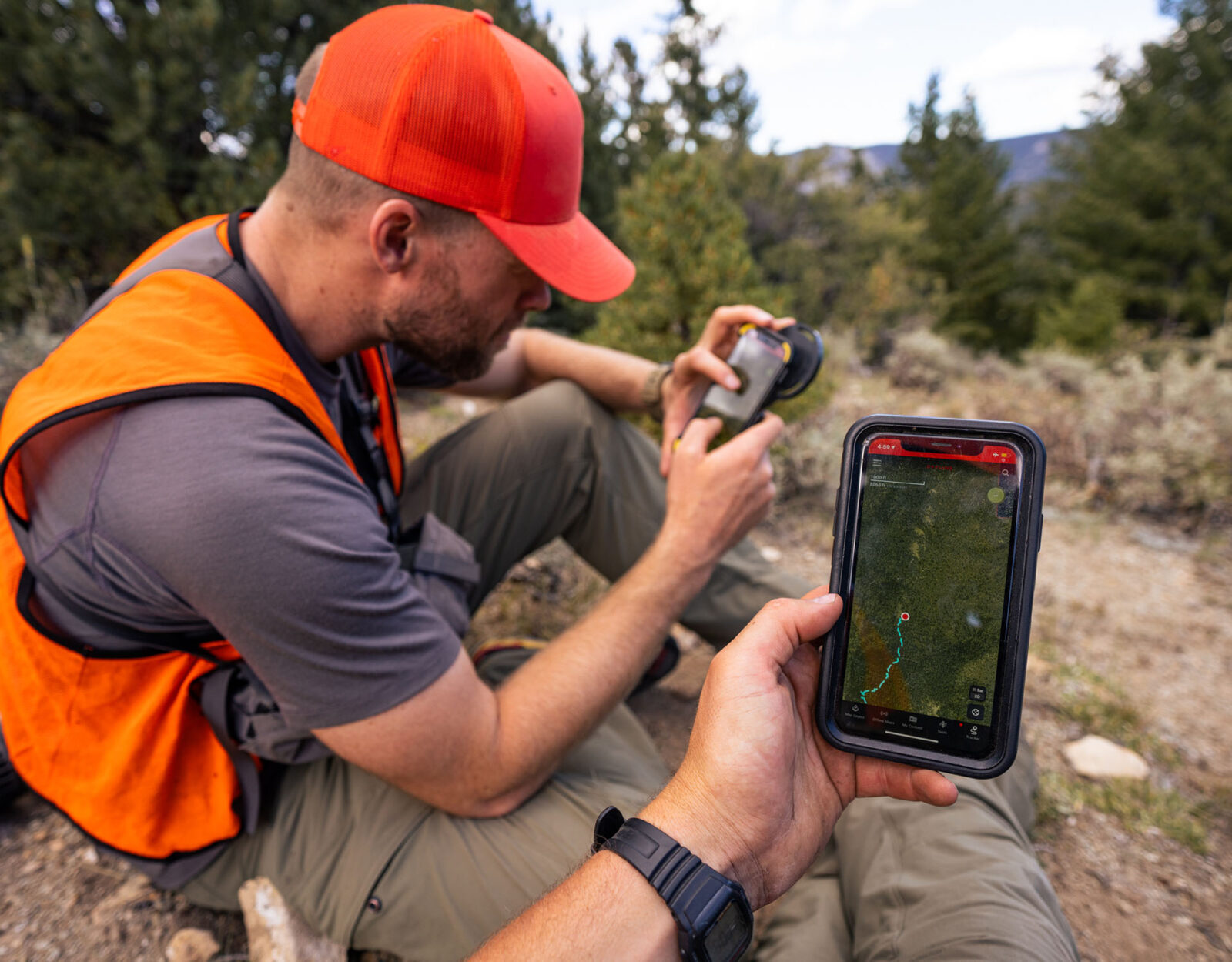
A simpler and cheaper alternative to carrying a hunting GPS unit is to have the onX Hunt App on your smartphone. With Offline Maps, you’ll have the ability to access your location, save Waypoints, and use all Layers and Tools even if you don’t have cellular service.
In whitetail woods, the ability to mark and share stand locations and access routes has been huge at our family farm. We are always shuffling, adjusting, and hanging new tree stands. Before the Hunt App, navigating to them the first time turned into frustrating walks, not being able to find the stand and inevitably not finding it until shooting light. That is, fortunately, a problem of the past. The ability to share the Track that gets you there as well as a Waypoint of the stand location has been so crucial to our ability to efficiently manage tree stand locations. – Jared Larsen, onX Hunt Staff
Essential Hunting Optics
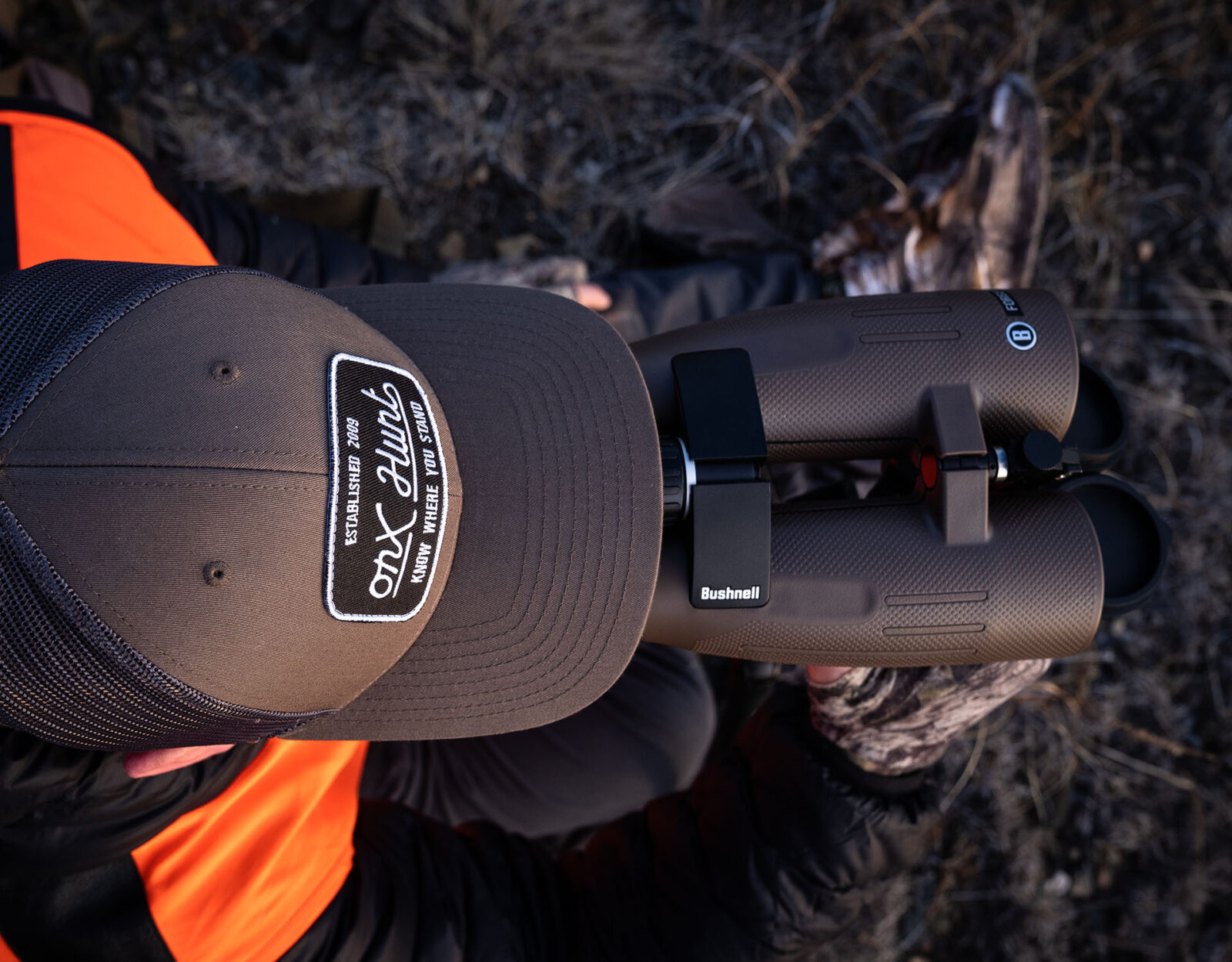
The four primary rules of firearm safety (T.A.B.K) are:
- Treat Every Firearm as if it Were Loaded
- Always Keep the Muzzle in a Safe Direction
- Be Sure of Your Target and Beyond
- Keep Your Finger Outside the Trigger Guard Until Ready to Shoot
The emphasis on number three above is why good visual aids are essential hunting gear. While it would be nice to have a rangefinder for measuring shot distance or a spotting scope and tripod for glassing faraway hillsides, it is essential to have a dependable pair of binoculars to be able to assess your target and beyond before taking a shot.
Choosing the right pair of binoculars for hunting depends on the power of magnification you want balanced with the weight you’re willing to carry. Anything from smaller 8×32 to the Bushnell Forge 15×56 binoculars might suit your needs. Accessories like a bino harness or bino tripod might also be worth having depending on your type of hunt and hunting area.
Emergency Supplies for Hunting
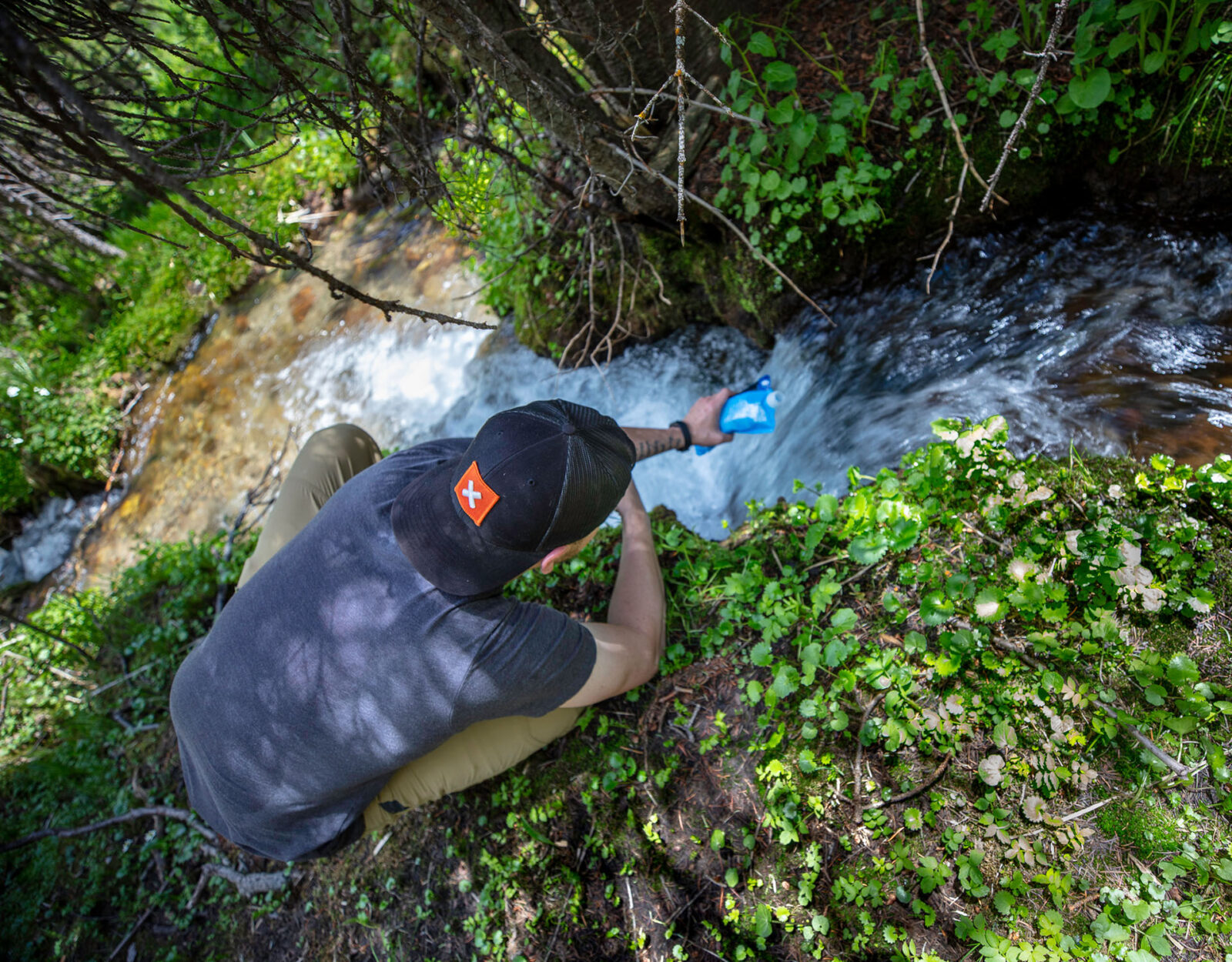
Do not leave home without emergency supplies. They are as important as every other piece of gear and clothing you’ll have with you. Consider this list as the absolute minimum you should consider carrying in case of emergency:
- Water and Water Purification System (UV filter and iodine tablets)
- Food (high-calorie foods with 40 percent carbs, 30 percent protein and 30 percent fats)
- Shelter (space blanket or emergency bivvy sack)
- First Aid Kit
- Fire-making Supplies (two lighters wrapped with duct tape and a waterproof Magnesium striker)
- Illumination (flashlight, headlamp, and extra batteries)
- Inreach device with SOS button (Garmin inReach Mini, Garmin 66i).
- Physical map and compass.
“Being a western hunter, one of the most important pieces of gear that never leaves my pack is my Sawyer Water Filtration system. It is lightweight, takes minimal space, and is extremely easy to operate. It also allows you the ability to fill a bottle or bladder with water if you are in a hurry, and filter it at a later time. Although I have never had an issue with it, it never hurts to always carry a few emergency water tablets, just in case.” – Dylan Dowson, onX Hunt Staff
Elk Hunting Gear
When elk hunting in high-country western states there are a few pieces of essential hunting gear that you should consider having with you.
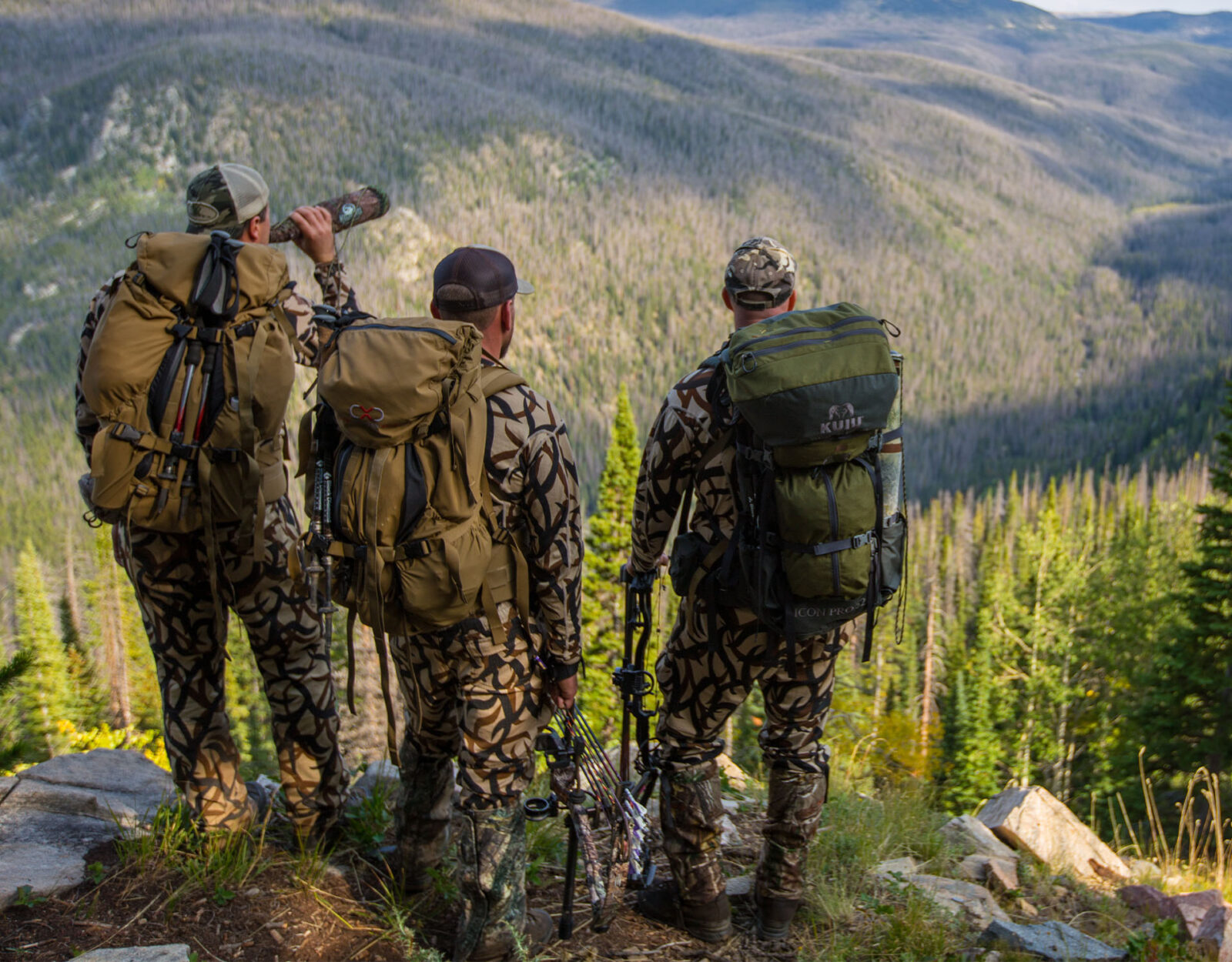
Game Bags
When you’ve finally gotten an elk on the ground, you’ll need quality cloth game bags to protect the quarters and meat after field dressing. Game bags like what Argali offers keep flies and other insects off of your game but are breathable, allowing the meat to cool when hung properly. Before they’re needed for packing out an elk, these bags are also helpful for storing and organizing extra clothes in your pack.
Backpack
Elk are heavy. There’s no getting around it. A good backpack with an adequate suspension/frame will afford you the ability to carry a lot of weight more safely and efficiently than you would without it. Not to mention it’ll hold everything you need for the day. We’ve had great luck with the K4 backpack from Exo Mountain Gear.
Bugle Tube and Cow Calls
It never hurts to at least have a cow call with you when elk hunting. Even if it’s just for the task of stopping a bull to get a shot. And if it’s September, a bugle tube can at the very least allow you to locate bulls. Check out Born and Raised Outdoors for a solid lineup of calls that we use and trust.
Camp Stove/Jetboil
These small lightweight stoves are fantastic for staying mobile and efficient. Boil water for food or coffee in mere minutes and get going sooner rather than later.
Tent, SleepingPad, and Sleeping Bag
Your tent, pad, and bag are essentially your home away from home. This system will not only let you get a good night’s sleep for recovery but also keep you dry when Mother Nature decides to throw some bad weather your way.
Trekking Poles
Trekking poles help immensely with stability, especially under heavy loads. They can also be used to glass from, pitch tents, and even roll out knots from hiking the elk woods all day.
Spotter
A spotting scope is one of those things that you don’t really think about until you really need one. In big mountains especially these can literally be the difference of knowing an elk is there and not. They’re also essential for judging bulls from a distance. Something small like the 13-39x56mm Razor HD from Vortex is a small lightweight spotting scope that packs a punch.
Essential Deer Hunting Gear
Whether you’re bowhunting from a tree stand or chasing whitetails on foot, there are a few essential items to throw in your pack.
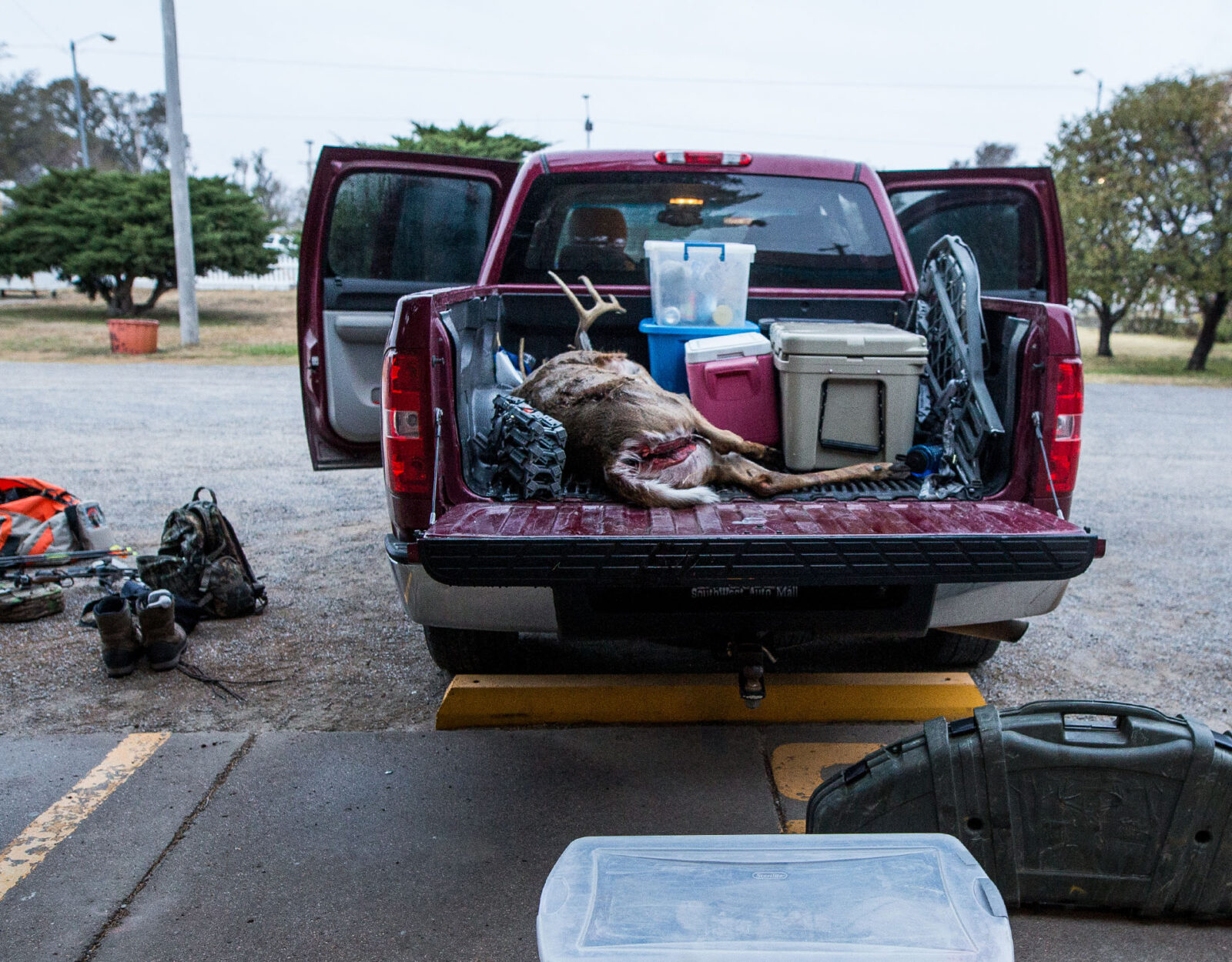
Scent Control
Deer have up to 297 million olfactory (scent) receptors in their nose. By comparison, dogs only have 220 million and humans have just five million olfactory receptors. Covering your scent is essential for successful whitetail hunting.
Rangefinder
Take all the guesswork out of your shot with a lightweight rangefinder. For bowhunting, you’ll want a rangefinder that works well in close proximity (10 yards or less), with readings marked in fractions of yards.
Deer Drag/Rope
Paracord (mentioned above) could work for a makeshift deer drag, but if you have to cover much distance you’ll want to save your shoulders and back and have a proper harness-style deer drag with you to get your downed deer back to your truck.
Tree Stand or Ground Blind
These will up your chances of not being seen for long periods of time. Check out Double Bull Blinds and Lone Wolf Treestands for quality in both departments.
Calls or Attractants
Especially, if it’s during the rut, having a grunt tube and rattling antlers can aid in bringing bucks your way. Don’t overlook attractants like doe in estrus scent either, as they can help both mask scent and attract.
Boot Blankets. There are a variety of companies that make insulating or heat-reflective boot blankets that can simply be slid over the top of any pair of boots to help keep your toes warm. At reasonably affordable prices, minimal weight, and space in the pack, I don’t leave home without them once the temps start dropping. Just make sure you put them on over your boots after you have got into your stand and are strapped in as they can be dang cumbersome to climb with. – Jared Larsen, onX Hunt Staff
Duck Hunting Gear
If you’ve got duck hunting planned in your future, consider also bringing these gear items along on your hunt.
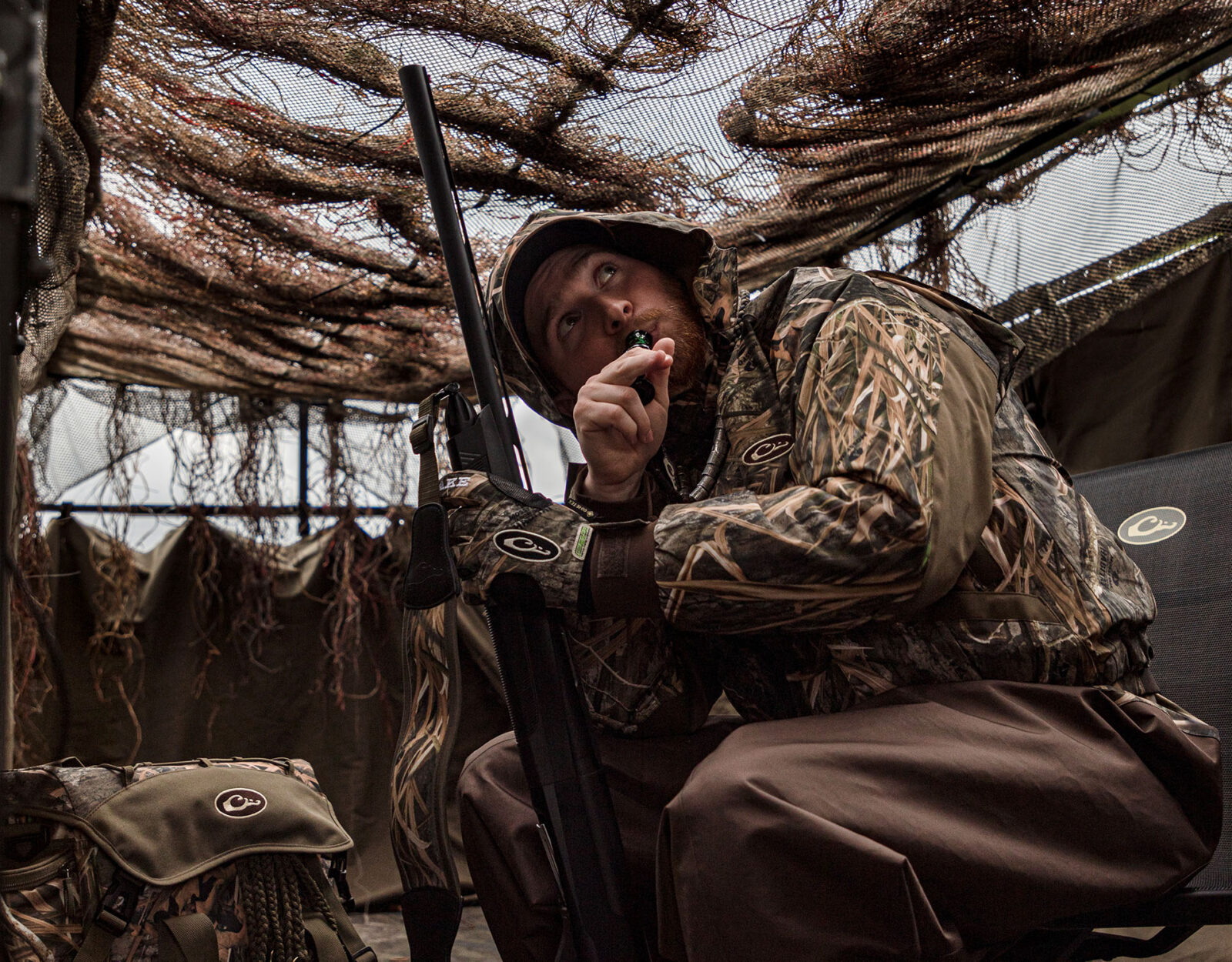
Waders
A good set of waders, like the Lacrosse Brush Tuff Extreme, are non-negotiable for duck hunting. You can plan on getting wet, whether it’s setting decoys or navigating to your blind. Even retrieval comes to mind and getting in and out of a boat. Waders will keep you dry and dry is good when it’s cold.
Duck Decoys
Using decoys is a tried-and-true method of luring ducks into range of your setup. Consider different decoy styles, and realism, to make the most wary of ducks comfortable. Dakota Decoys really nails it on all fronts. These can not only attract ducks, but you can even go as far as somewhat controlling where other ducks land in your setup.
Duck Blind
Seeing is believing, and if ducks don’t see you, they’ll believe it’s safe to enter your setup. Blinds offer you the ultimate advantage of surprise.
Game Strap
If and when you are so fortunate to bag a limit of ducks, you’re going to want a way to efficiently and comfortably carry those ducks back to your rig. There’s no better way than a quality game strap, which allows you to carry in upwards of a dozen ducks in one fell swoop.
Dry Bag(s)
We’ve established that you can plan on getting wet, which means that you can also plan on your things getting wet. Dry bags are a great tool to protect your belongings from getting wet, be it electronics, extra clothing, or food (for you or your dog). They come in a variety of sizes to fit your needs. When you don’t need them, they pack down to almost nothing.
Watercraft or Hunting Dog
If you’re gonna shoot ducks, you better have a means of retrieval at the ready. Whether it’s a watercraft or dog, the fallen ducks are going to send you into the water. Both are great options.
Calls
Calls are another proven tool of successful duck hunters; they’ll help you set the scene and pull ducks into your setups. Primos is a trusted name in calls and a fantastic resource to get you set for the season.